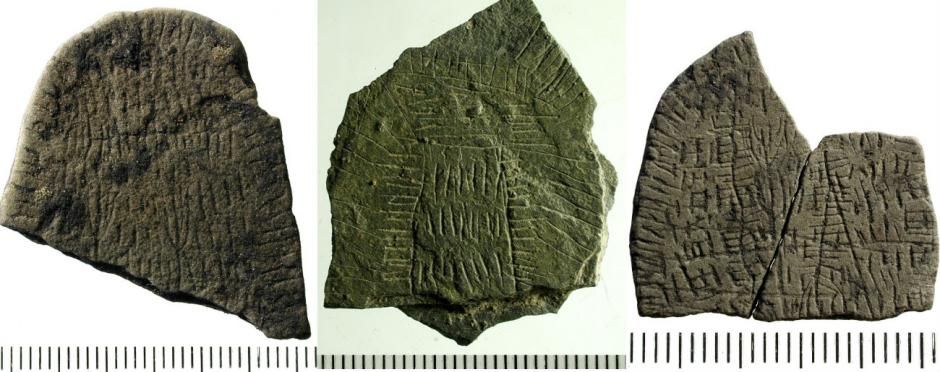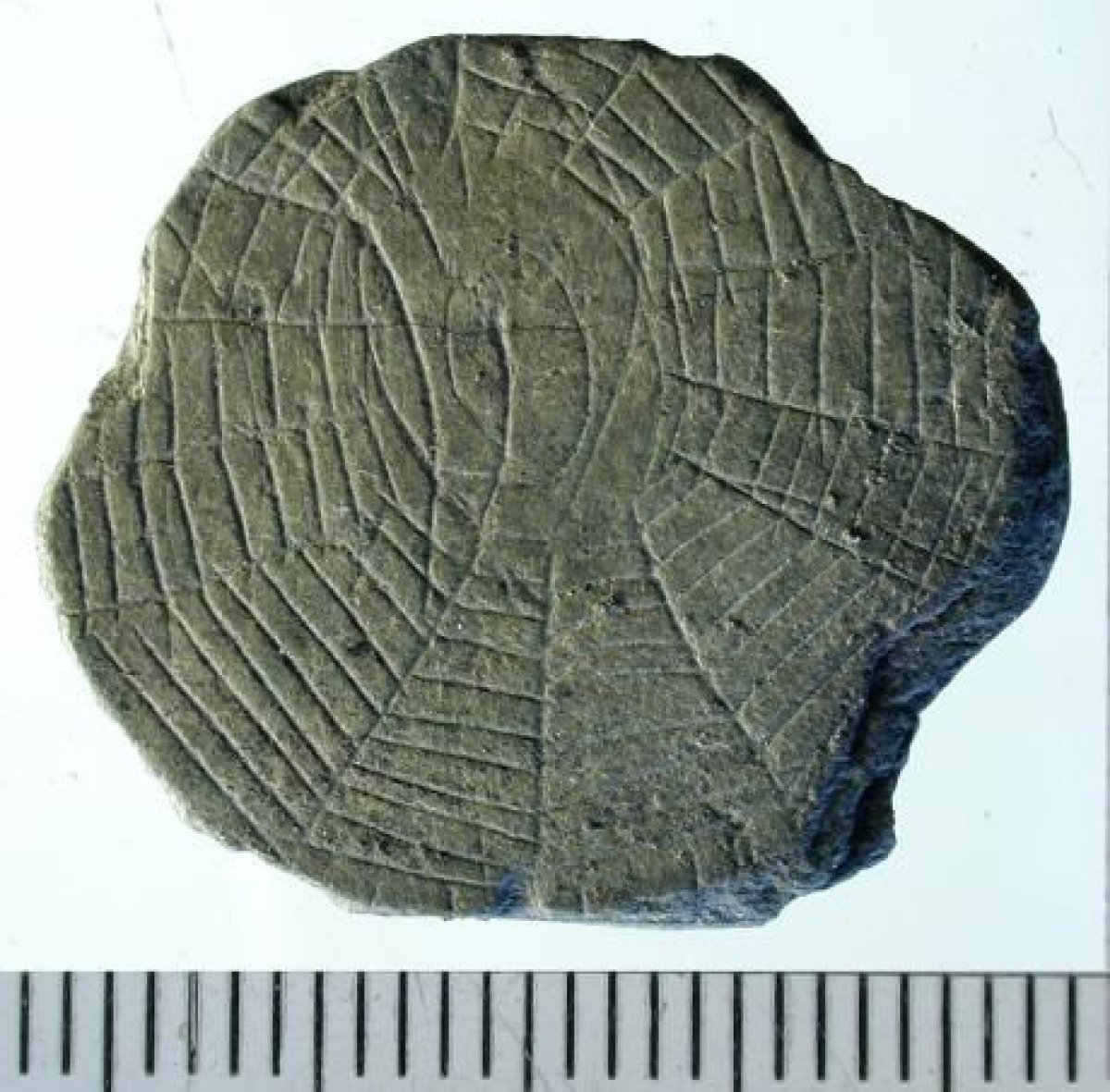
Archaeologists working on the Danish island of Bornholm discovered around 300 rocks engraved during the Stone Age. But archaeologists have no idea what the rocks may represent.
The rocks are approximately 5,000 years old, according to the Copenhagen Post. Bornholm, a popular vacation destination among Danes, is often called "the sunshine island," the Post reported. However, the archaeologists had another reason for naming the cache they discovered "sun stones"—many are circular, with lines radiating from the center outward, evoking images of the sun. Others, though, are square-shaped, etched with lines that might represents harvests, while some are etched with spider web patterns. But the researchers, who come from various institutions across Denmark and Sweden, can't be sure what purposes they might have served regardless of shape or pattern.
"That is the million-dollar question," Lars Larsson, a professor emeritus of archaeology at the University of Lund in Sweden, told Danish-language science news site videnskab.dk, which first reported the discovery. "It is impossible to know precisely what they were used for."

The stones were discovered earlier this year in Vasagård, in southern Bornholm, where, according to the Post, similar stones have been discovered in the past. Vasagård was the site of an ancient temple likely devoted to worship of the sun, according to the science news site, Science in Poland, which has covered previous sun-stone discoveries. The location of the temple's entrances correspond to the direction of the sun on either solstices or equinoxes.
"We've known about sun stones for a while, but the field stones are something entirely new," Finn Ole Sonne Nielsen, the lead archaeologist from Bornholm Museum, told the Post. "And the variation among them with spider webs is something we didn't know existed."
Nielsen told the Post that the stones look worn, as though their owners had been carrying them around. And they were small enough to be portable since they are roughly the size of large coins.
The archaeologists are considering whether they might have had ritualistic purposes, according to videnskab.dk. However, they also said that "ritualistic purposes" could mean so many different things that that's basically the same as saying they have no idea. It's possible they could have been amulets, temple offerings or "happiness coins," or that the spider web-patterned stones could have had something to do with the symbolic transition between life and death, according to videnskab.dk.
"It can also be a form of counting," Rune Iversen, an associate professor at the University of Copenhagen who's involved in the excavations, told videnskab.dk. "Who knows? Some of the most exciting of the latest findings is that we have had a variety of patterns."
Uncommon Knowledge
Newsweek is committed to challenging conventional wisdom and finding connections in the search for common ground.
Newsweek is committed to challenging conventional wisdom and finding connections in the search for common ground.
About the writer
Kastalia Medrano is a Manhattan-based journalist whose writing has appeared at outlets like Pacific Standard, VICE, National Geographic, the Paris Review Daily, ... Read more
To read how Newsweek uses AI as a newsroom tool, Click here.








